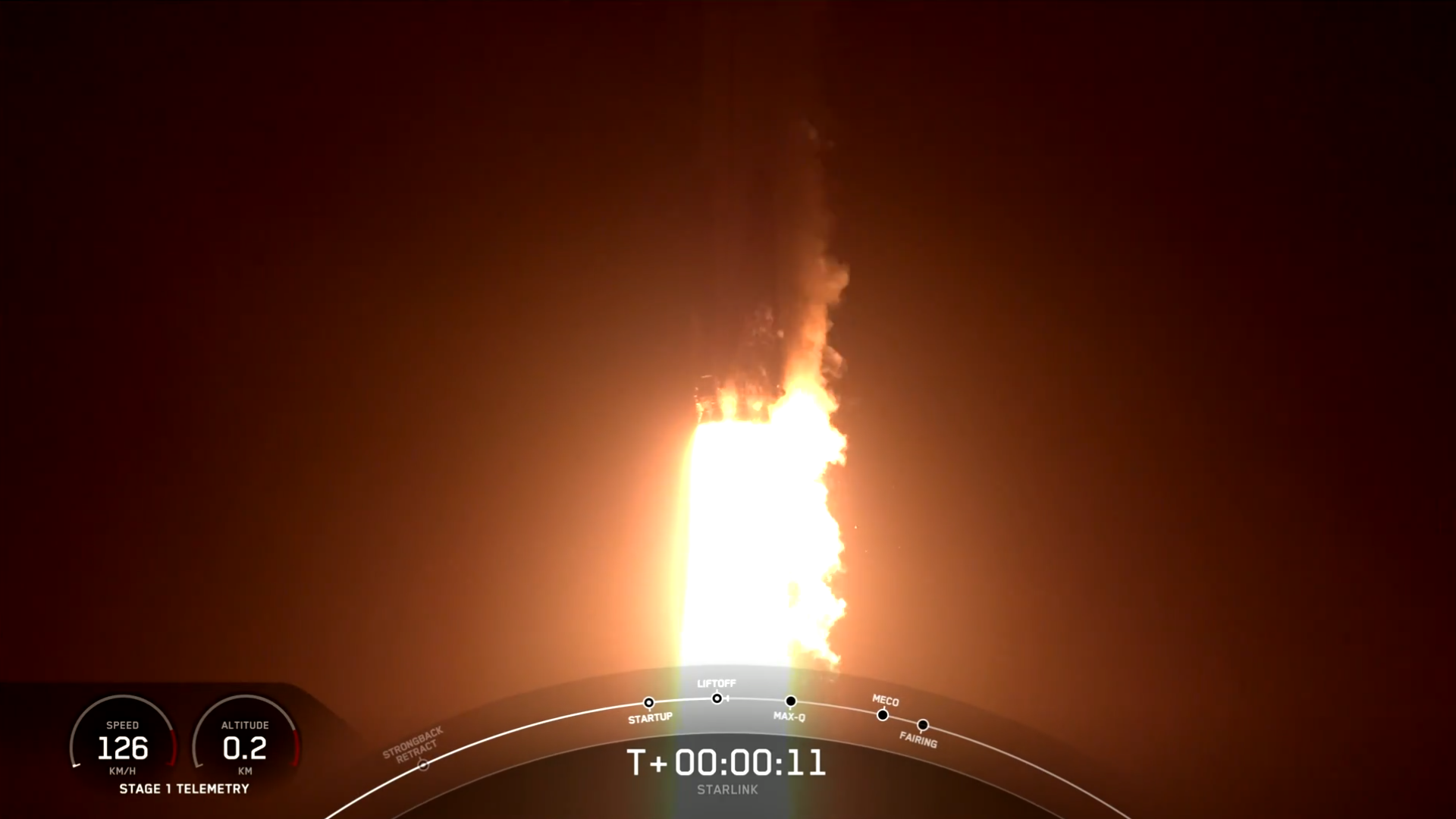
SpaceX has officially kicked off 2024 with a West Coast Falcon 9 mission, marking only the fourth year in its history to begin with a launch out of Space Launch Complex (SLC)-4E at Vandenberg Space Force Base, Calif. The brand-new B1082 core—teamed with previously flown fairing halves—took flight at 7:44 p.m. PST Tuesday, laden with 21 Starlinks, including the first six “Direct to Cell” satellites, which reportedly enable mobile network providers to offer “seamless global access to texting, calling and browsing” whether “on land, lakes or coastal waters”.
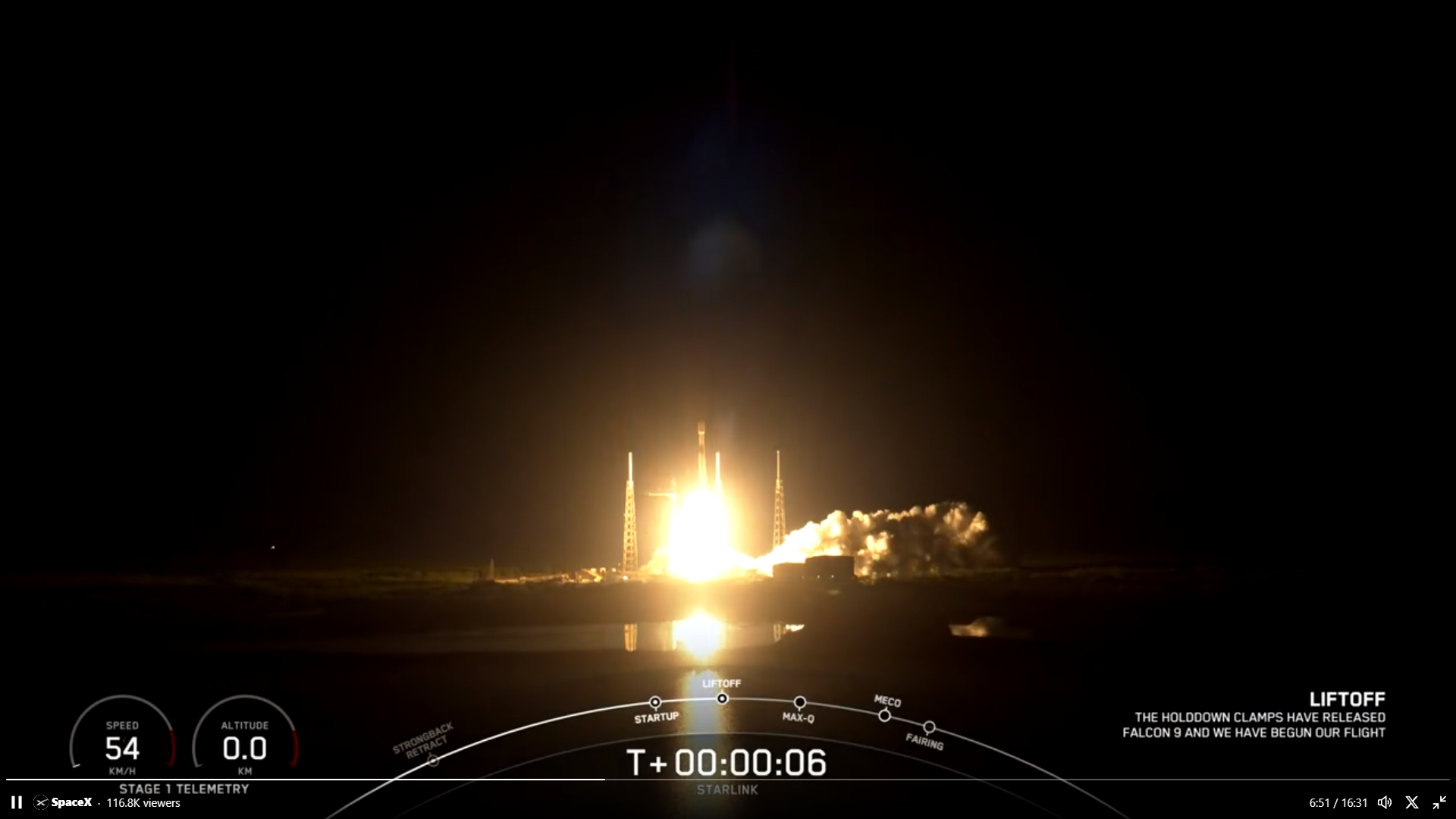
Two and a half minutes after last night’s liftoff, B1082 separated from the stack and executed a picture-perfect pirouette of Entry and Landing Burns to wrap up her maiden voyage with a pinpoint touchdown on the expansive deck of the West Coast-based Autonomous Spaceport Drone Ship (ASDS), “Of Course I Still Love You”. The drone ship put to sea out of Port of Long Beach on New Year’s Eve, its second departure in recent weeks in support of this long-delayed mission.
As is customary for a brand-new core, B1082 underwent a 77-second Static Fire Test of her nine Merlin 1D+ engines at SpaceX’s Rocket Development Facility in McGregor, Texas, in mid-October, before being transported overland to Vandenberg to join her four West Coast-based sisters which between them logged 28 missions last year. But plans to fly B1082 in early-to-mid December proved fruitless, due to a deteriorating weather picture at Vandenberg, and hopes to fly as late as 28/29 December were also called off as the mission found itself pushed into first place on the 2024 manifest.
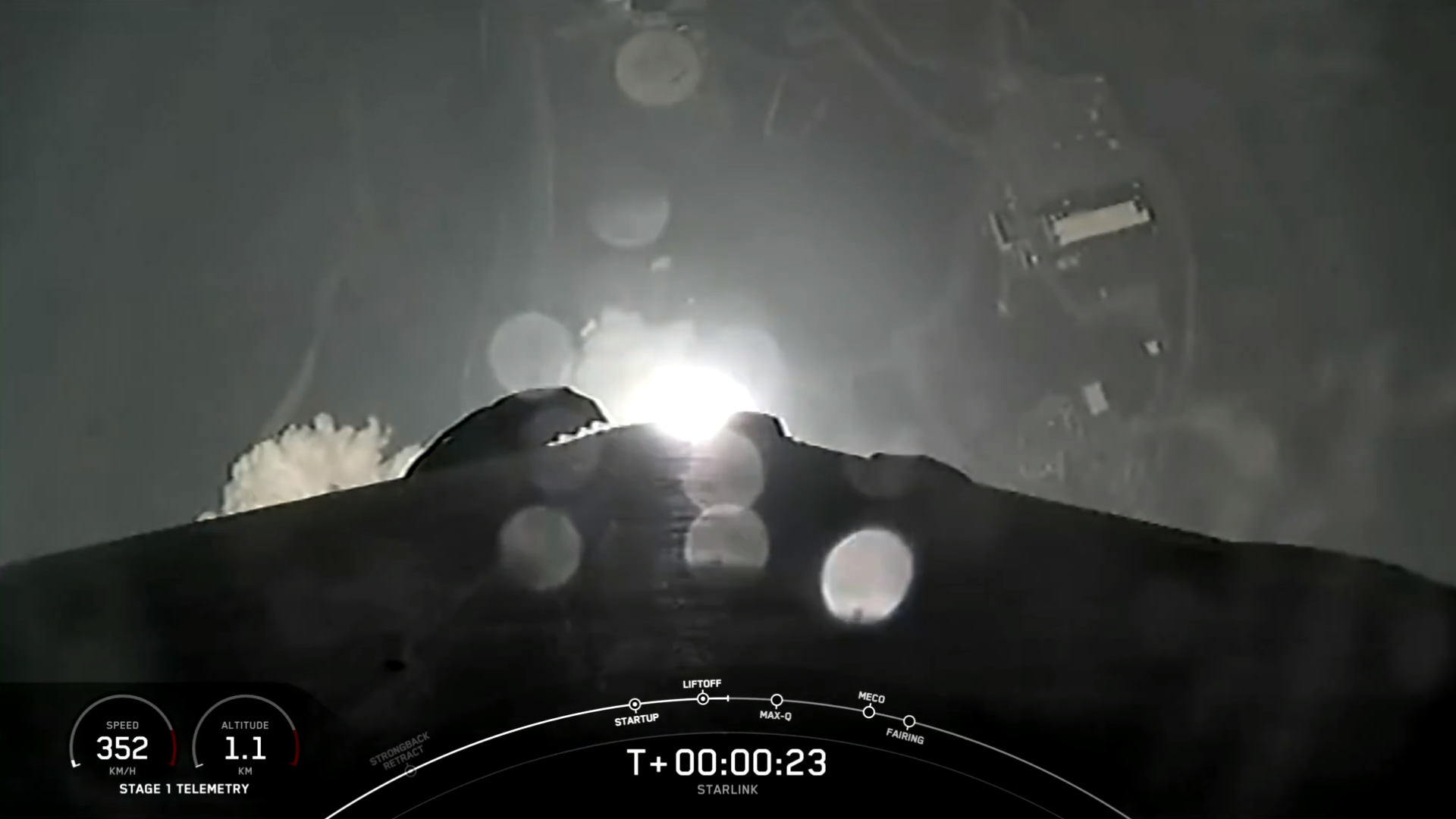
These delays prompted OCISLY to depart Port of Long Beach on no less than two occasions: firstly last month and most recently on New Year’s Eve in readiness for her first Falcon 9 “catch” of 2024. SpaceX revealed that B1082 would fly during a four-hour “window” extending from 6:13 p.m. PST to 10:13 p.m. PST Tuesday, with backup opportunities starting at 5:51 p.m. PST Wednesday.
With B1082 gone, the Falcon 9’s second stage executed a customary six-minute “burn” of its single Merlin 1D+ Vacuum engine, ahead of deployment of the 21 Starlinks at 62 minutes into the flight. All told, the stack tipped the scales at 37,000 pounds (16,800 kilograms) and included the first six “Direct to Cell” Starlinks to facilitate mobile network providers to offer “seamless global access to texting, calling and browsing” whether “on land, lakes or coastal waters”, without changing hardware or firmware.
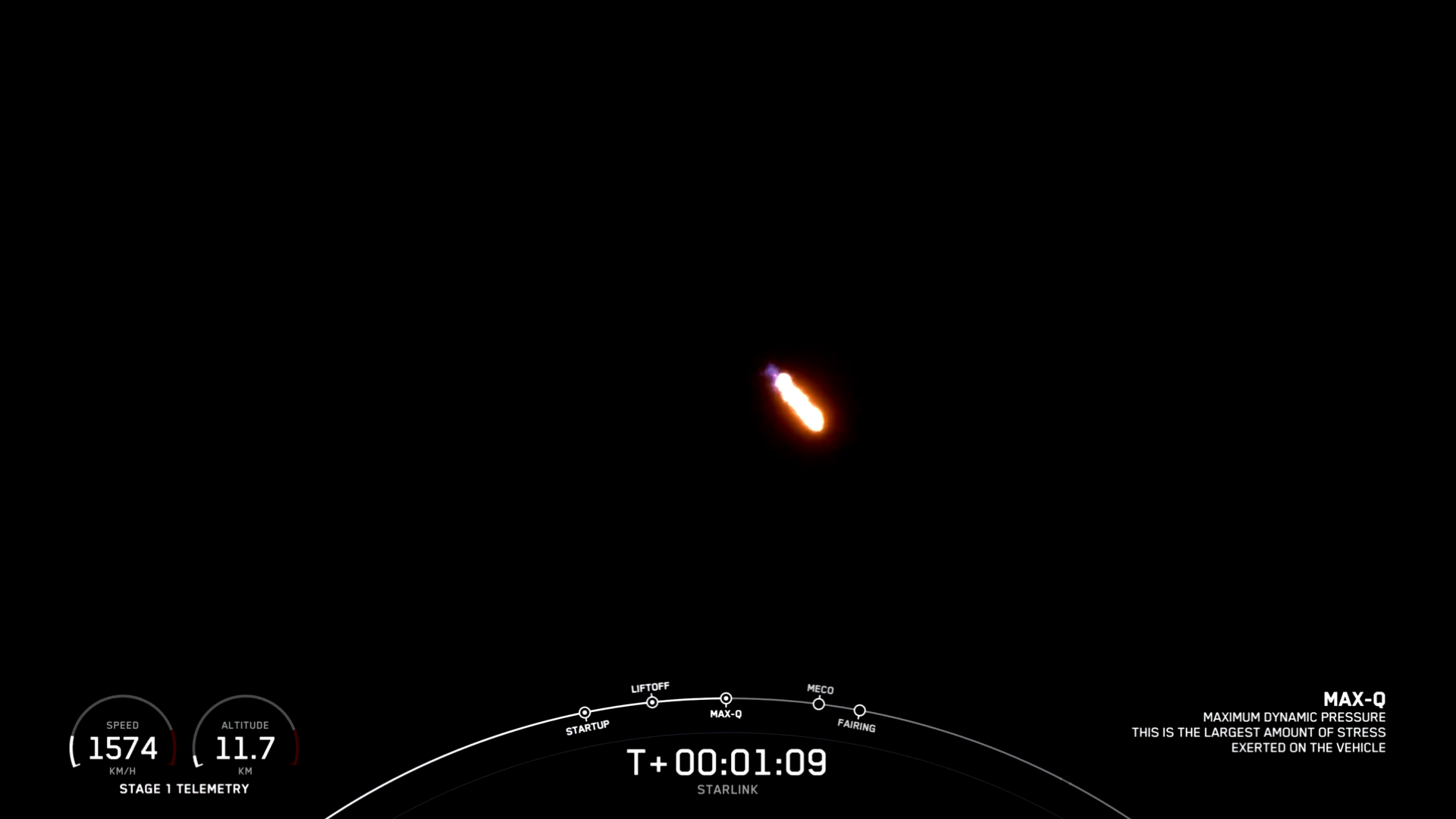
“The enhanced Starlink satellites have an advanced modem that acts as a cellphone tower in space, eliminating deadzones with network integration similar to a standard roaming partner,” SpaceX tweeted after last night’s launch. “Global cellular providers using Direct to Cell to gain reciprocal access in all partner nations include T-Mobile in the U.S., Rogers in Canada, KDDI in Japan, Optus in Australia, One NZ in New Zealand, Salt in Switzerland and Entel in Chile and Peru.”
As a network, Starlink enables high-speed and low-latency internet provision to 70 sovereign nations and international markets in North and South America, Europe, Asia, Oceania and Africa. Landlocked Eswatini—formerly Swaziland in southern Africa—and Paraguay joined Starlink as recently as December.
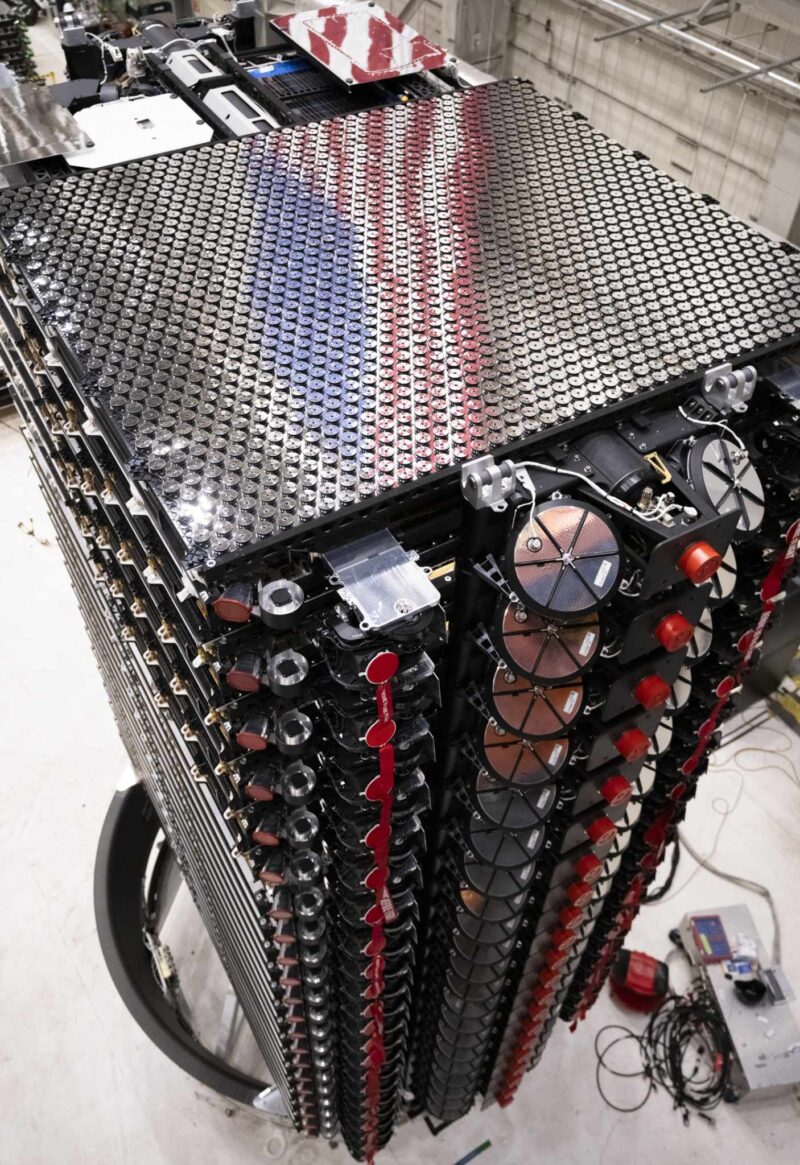
The downsized Starlink “V2 Mini” satellites, first flown last February, boast three to four times greater “usable” bandwidth than earlier Starlink iterations. “V2 Minis include key technologies—such as more powerful phased-array antennas and the use of E-Band for backhaul—which will allow Starlink to provide 4x more capacity per satellite than earlier iterations,” SpaceX explained. “Among other enhancements, V2 Minis are equipped with new argon Hall thrusters for on-orbit maneuvering.”
Florida-based intercity operator Brightline adopted Starlink on its trains earlier in 2023, the first passenger rail service in the world to do so. Additionally, El Salvador’s Ministry of Education has begun integrating Starlink capability into its schools to help close the digital divide between urban and remote rural communities and 50 Rwandan schools are now connected via Starlink’s high-speed internet service.

SpaceX is reportedly aiming for as many as 144 launches before the end of 2024, an ambitious yet realistic prospect. Even at its current cadence, the Hawthorne, Calif.-headquartered organization has managed nine launches per consecutive month since August 2023; even if that flight rate continues at its present pace, 2024 should achieve at least 118 missions by next New Year’s Eve.
To accomplish as many as 144 launches, of course, will require that pace to pick up substantially from the present average of a mission every 3.8 days to one every 2.5 days or so: in other words, 12 or more flights per calendar month. Launch rates rose correspondingly from seven per month at this date last year to eight last March and nine last summer, with SpaceX flying ten missions across a single 30-day span in September.
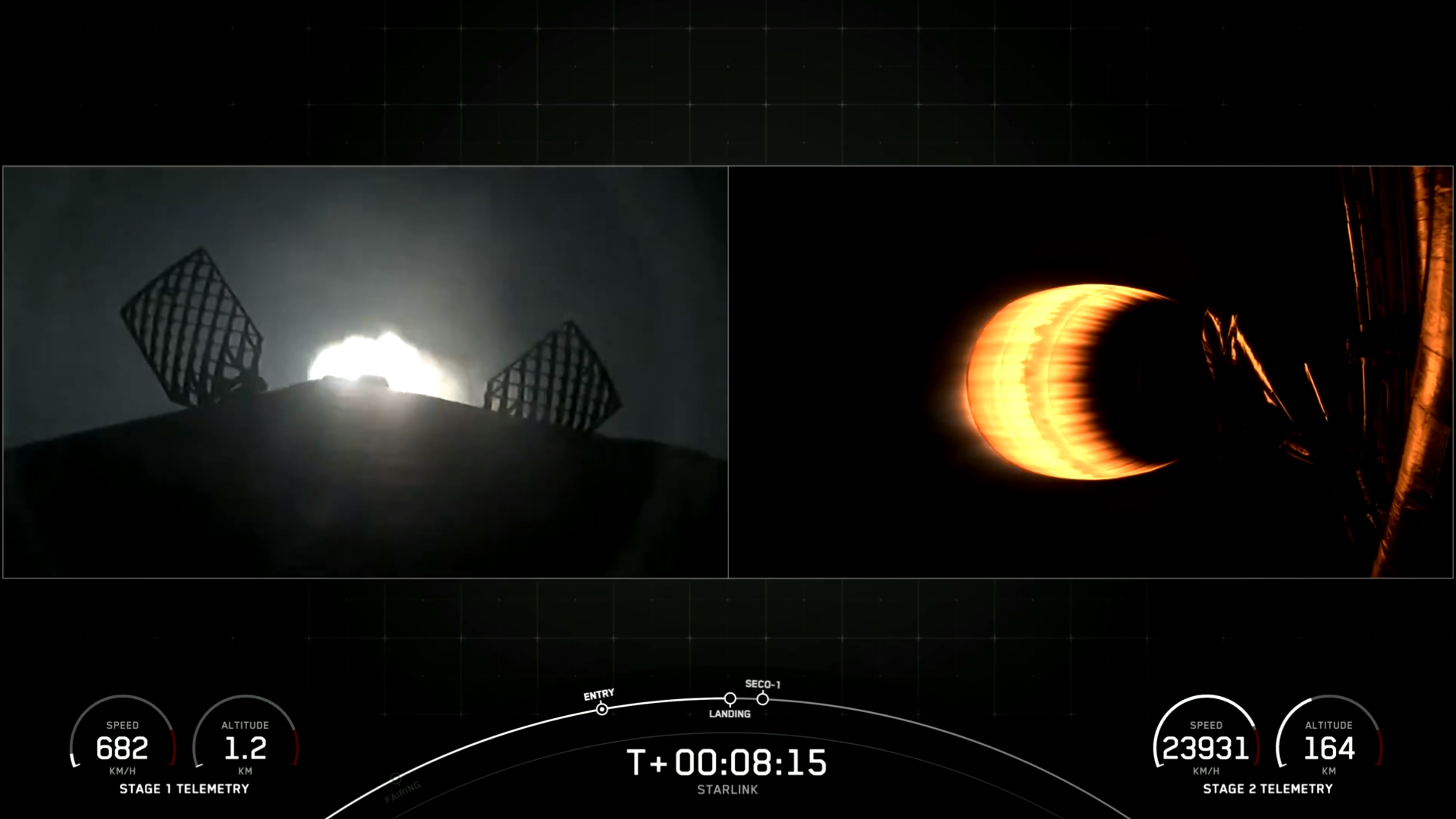
The vast majority of Falcon 9 customers over the last half-decade have been in-house Starlinks, more than 5,600 of which have been launched, flat-packed in batches of as few as 15 to as many as 60 on no less than 133 Falcon 9 missions since May 2019. Their percentage-share on annual Falcon 9 missions grew from 18 percent in 2019 to 69 percent in 2023 when 63 of last year’s 91 launches delivered 1,984 Starlinks safely into orbit.
Attention now turns to storied Space Launch Complex (SLC)-40 at Cape Canaveral Space Force Station, Fla., where the B1076 booster stands primed to become the 12th single-stick Falcon 9 to pass ten flights. She is targeting a ten-minute “window” that opens at 6:04 p.m. EST Wednesday, with a more expansive 87-minute window available on Thursday from 4:47 p.m. EST through 6:14 p.m. EST.
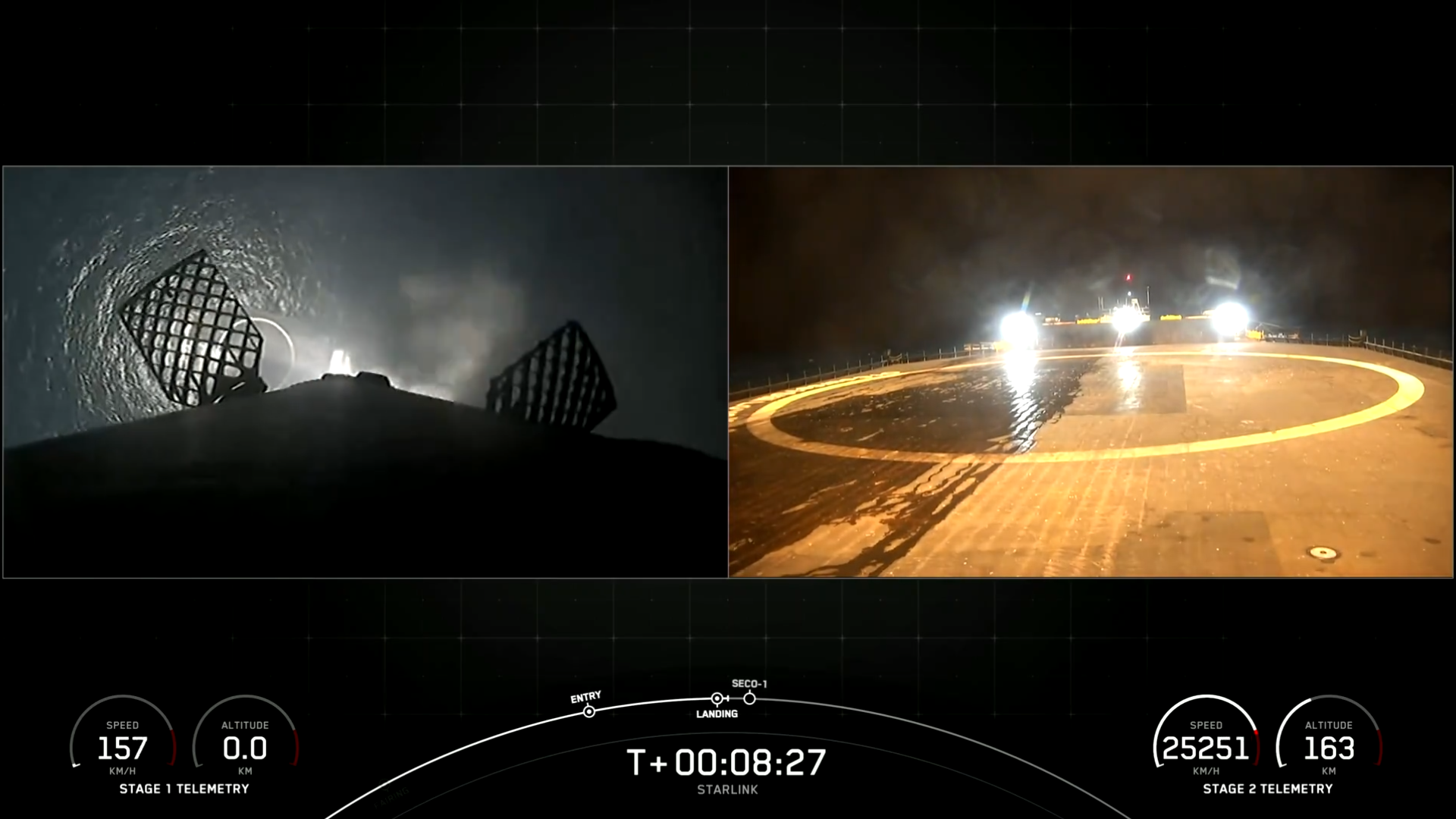
Weather conditions are reportedly favorable, with a 90-percent likelihood of acceptability tomorrow, improving to 95 percent on Thursday evening. The primary weather concern for tomorrow night is a possible violation of the Thick Cloud Layers Rule, with an anticipated increase in mid-level and high clouds, with the arrival of a cold front on Thursday possibly tempered by higher-than-allowable liftoff winds.
Aboard B1076 is Sweden’s Ovzon-3, a 3,968-pound (1,800-kilogram) High Throughput (HTP) broadband communications satellite, destined for Geosynchronous Transfer Orbit (GTO) with an eventual operational altitude of 22,300 miles (35,900 kilometers). This mission was originally contracted to SpaceX back in October 2018 as a Falcon Heavy payload, inserted directly into Geosynchronous Earth Orbit (GEO), but subsequently transitioned firstly to Arianespace’s Ariane 5 and later back to SpaceX and a single-stick Falcon 9 mission.
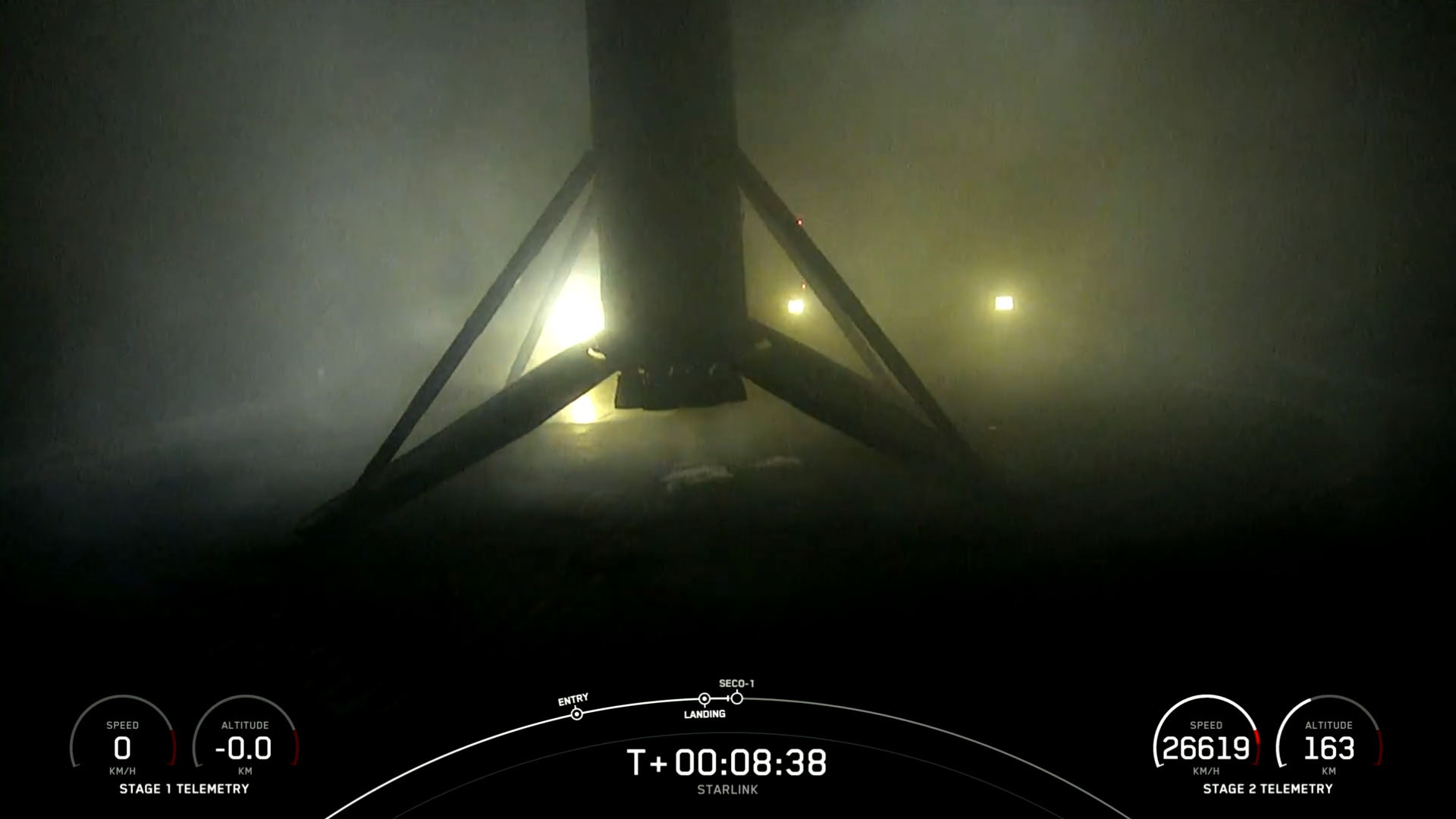
In December 2018, it was revealed that Maxar would build the “mid-sized” Ovzon-3 on the bones of its tried-and-proven Legion-class satellite “bus” (previously known as SSL-500) and slated for launch in the fourth quarter of 2020, “conditional,” it cautioned, “on Ovzon raising financing”. By the following July, that financing commitment was in place—via a loan facility led by Proventus Capital Partners comprising a loan of $60 million and a subordinated loan of 200 million Swedish Krona ($19.6 million)—and fabrication of Ovzon-3 got underway in Maxar’s Palo Alto, Calif., facilities in July 2019, by which time launch had slipped until no sooner than the fourth quarter of 2021.
In the meantime, contracts for usage of the new satellite emerged in the form of the Italian Ministry of Defence for “on-the-move” and “on-the-pause” data applications, together with scalable 24/7/365 “SATCOM-as-a-Service” orders from a wide range of customers, including the Swedish Space Corporation (SSC), the Government of Colombia, Italy’s fire and rescue services and border police and the UK Government. Ovzon-3’s five independent, steerable spot-beams will “dynamically deliver capacity to the right place at the right time” and its powerful on-board processor “directly connects deployed terminals across multiple beams when teleports are degraded, destroyed or otherwise unavailable” and facilitates frequency-hopping to counteract jamming and usage in environments without GPS coverage.
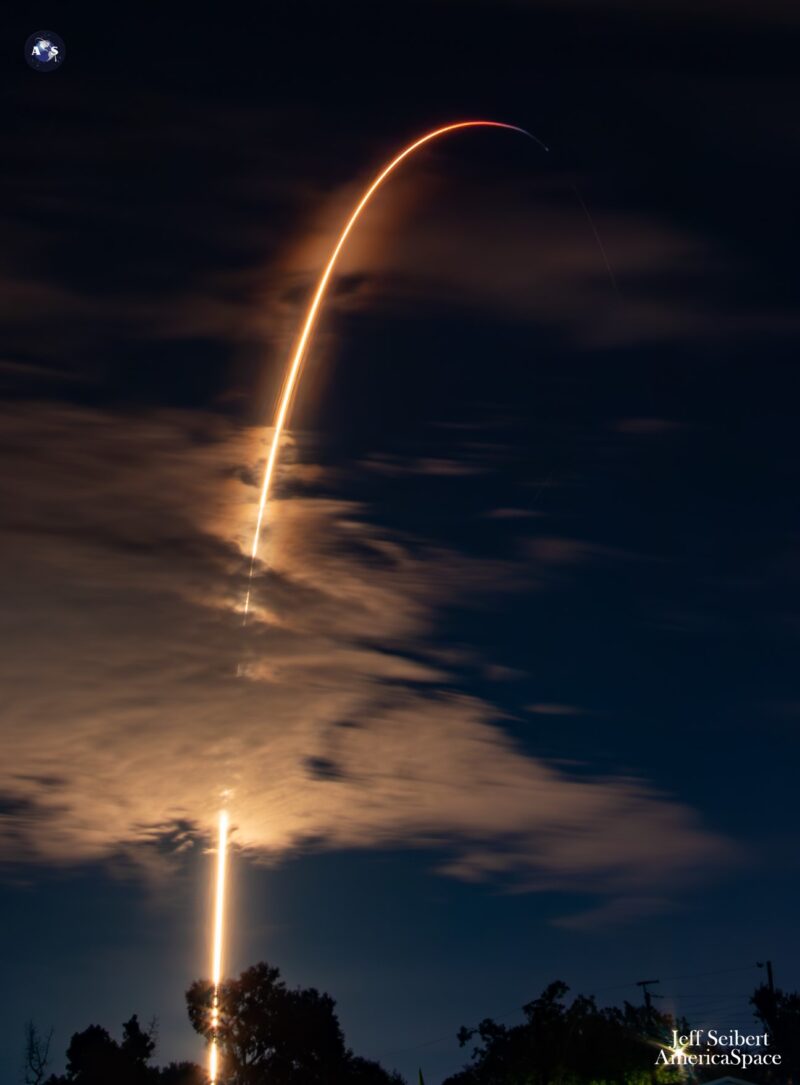
Delays in Ovzon-3’s construction, a shortage of key satellite components and the worldwide march of the COVID-19 coronavirus pandemic pushed launch progressively further to the right, firstly to the December 2022-February 2023 timeframe and eventually into last month. Originally targeted to fly on 15 December, unfavorable weather in Florida pushed launch back to the 22nd and eventually into the New Year.
“The things we can control are well under control,” said Per Norén, CEO of Ovzon. “We have a healthy spacecraft ready for launch as soon as the weather clears and we are working closely with SpaceX to do that safely and as quickly as possible. Weather is a key factor in every launch, so now is the time for patience.”
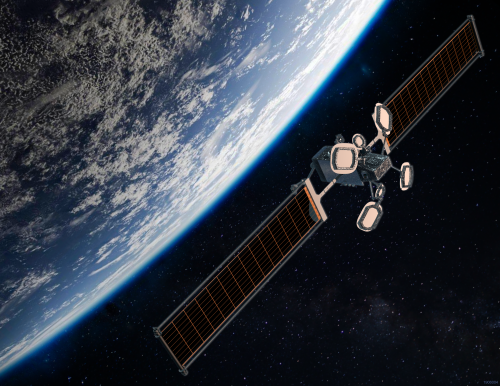
That patience proved rewarded last night, when SpaceX formally announced that Ovzon-3 is targeting a ten-minute “window” for launch, opening at 6:04 p.m. EST Wednesday. Following launch, the satellite will be deployed from the Falcon 9’s second stage about 38 minutes into the flight, then utilize its on-board electric propulsion system to transition itself from Geosynchronous Transfer Orbit (GTO) to Geosynchronous Earth Orbit (GEO) over a period of three to four months.
When fully deployed and operational at 59.7 degrees West longitude, Ovzon-3 will span about 89 feet (27 meters) across the length of its twin solar arrays. The satellite is expected to remain fully functional for up to 20 years of continuous service.




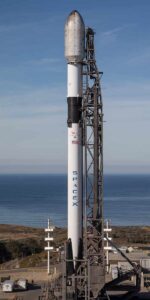
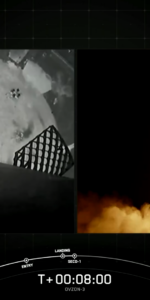
What’s up with the launch tracker? It’s showing the next launch is on Dec 1, 2023:
Next Launch Korea 425/ EIRSAT-1 on a Falcon 9 rocket from Vandenberg AFB, CA
scheduled for:
1 Dec 23 at 18:19 GMT
1 Dec 23 at 10:19am Pacific
1 Dec 23 at 1:19pm Eastern